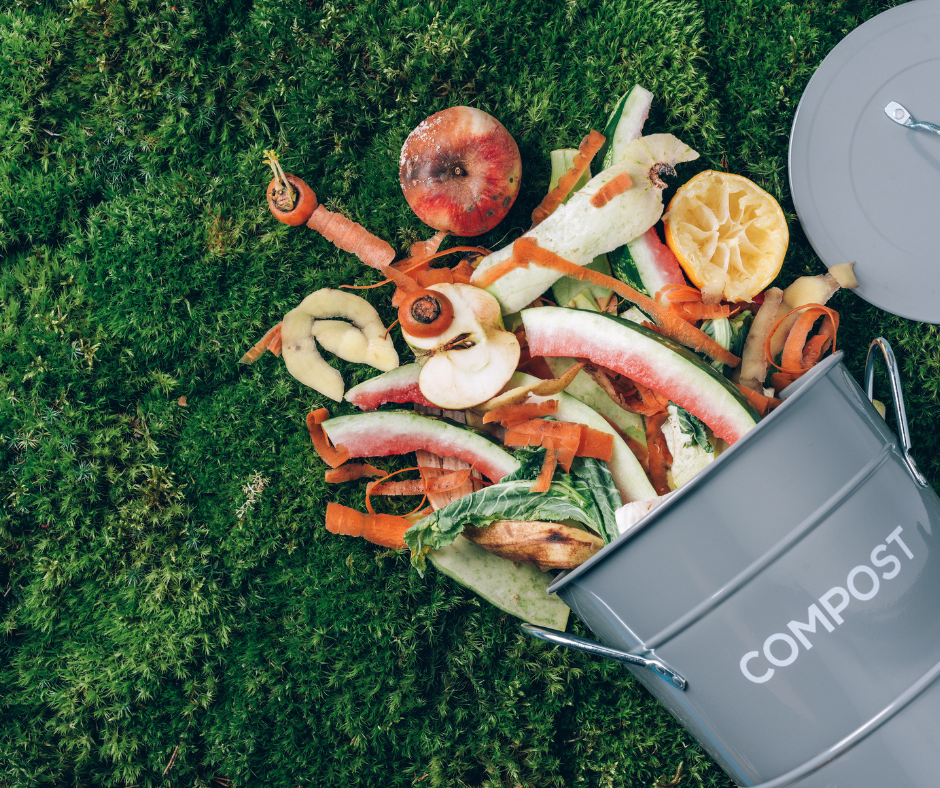
FOOD WASTE
How we can improve the impact on the environment
It is estimated that wasted food is responsible for 58% of landfill methane emissions to the atmosphere
“Food waste thrown in landfills does not decompose naturally, or return to the Earth as beneficial nutrients, because it lacks the proper conditions. Instead, it rots and produces methane, a greenhouse gas 25 times as potent as carbon dioxide (CO2) at trapping heat in the atmosphere.” – thekidshouldseethis.com
Composting provides the ideal conditions for microorganisms to thrive, enabling them to turn organic matter into nutrient-rich soil. This in turn can help crops, garden plants, and trees grow. It creates new soil from which more plants can grow, from which animals and humans will eat, and so on.
Everything comes full circle – the circle of Life. So when composting at home or on the farm, we can control the elements to help promote healthy decomposition.
Solutions to Food Waste
Learn how we can all do our bit to reduce the amount of food waste that goes into landfill.
7 ways you can reduce food waste
1. Take an inventory.
Take stock of what is in your ‘fridge and freezer before going shopping to prevent overbuying.
2. Create a meal plan.
Planning at least a few meals for each week is a great way to make sure you have healthy meals. It also prevents you from buying too much food so can help you save money. Coordinate your meals so you are not using completely different ingredients for every recipe. For example, plan to eat carrots as a side dish one evening and in a casserole the next.
3. Save and eat leftovers safely.
If you don’t think you will be able to eat your leftovers within three days, store them in the freezer and label them. Keep your freezer organised so food does not get lost and then have to be thrown out due to freezer burn.
4. Store food appropriately.
One of the biggest reasons people say they do not eat fresh fruit and vegetables is because they go bad and have to be thrown out. So start by only buying what you can eat in a week. Store greens with a paper towel in a plastic container in the fridge crisper drawer and tomatoes and bananas on the worktop. Potatoes and onions should be stored in a cool, dark place and fresh herbs in a glass of water. Have some frozen fruits and vegetables on hand in case you eat all your fresh produce before your next shopping trip.
5. Buy “ugly” foods.
Buying ugly food refers to misshaped or oddly shaped fruits or vegetables, and it has never been easier. You can buy natural, imperfect produce at the local farmer’s markets and most supermarkets. Remember, don’t purchase bruised or spoiled produce.
6. Compost.
Even vegetable peelings should not go to waste. Garden composting is a great way to keep food waste out of the landfill and provide nutrition for your garden.
7. Use leftovers creatively.
Find ways to use leftovers instead of throwing them away. Vegetable scraps and peels can be made into soup stock. Apples or blueberries that are soft are perfect cooked in porridge. You can even use stale bread to make croutons, bread and butter pudding or French toast. Slightly wilted vegetables are great for soups or in stir-fries. And one of the best things about soup is you can make it out of pretty much anything.

